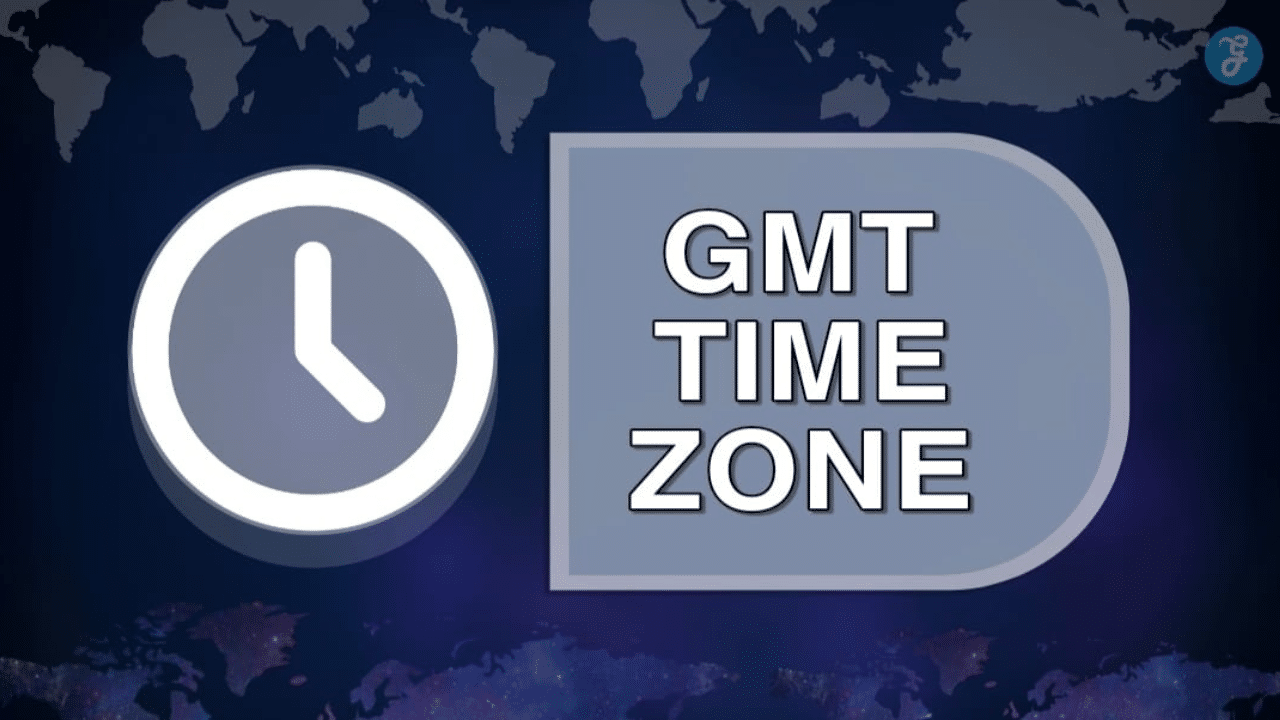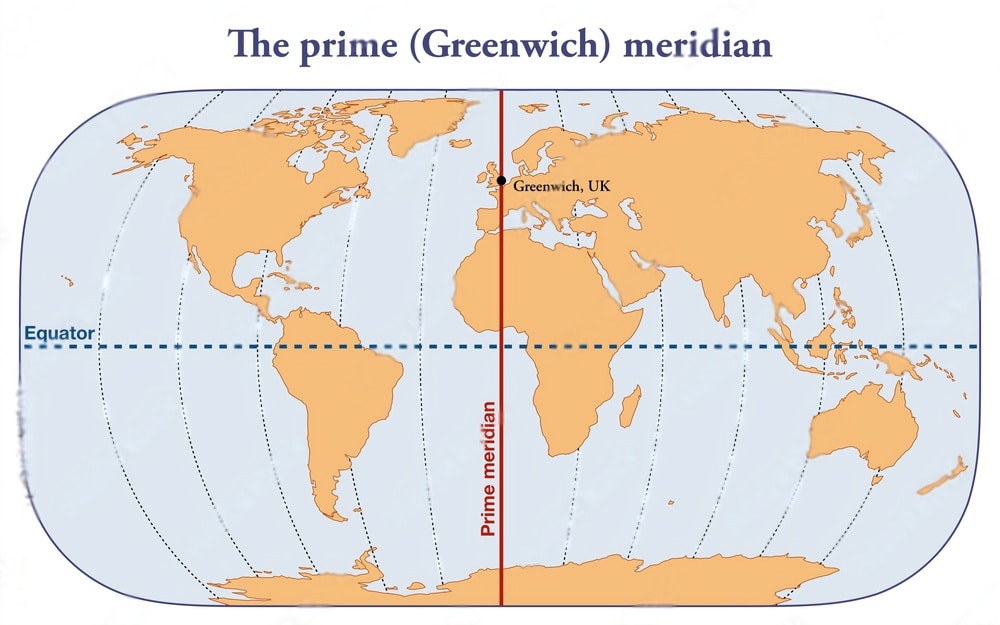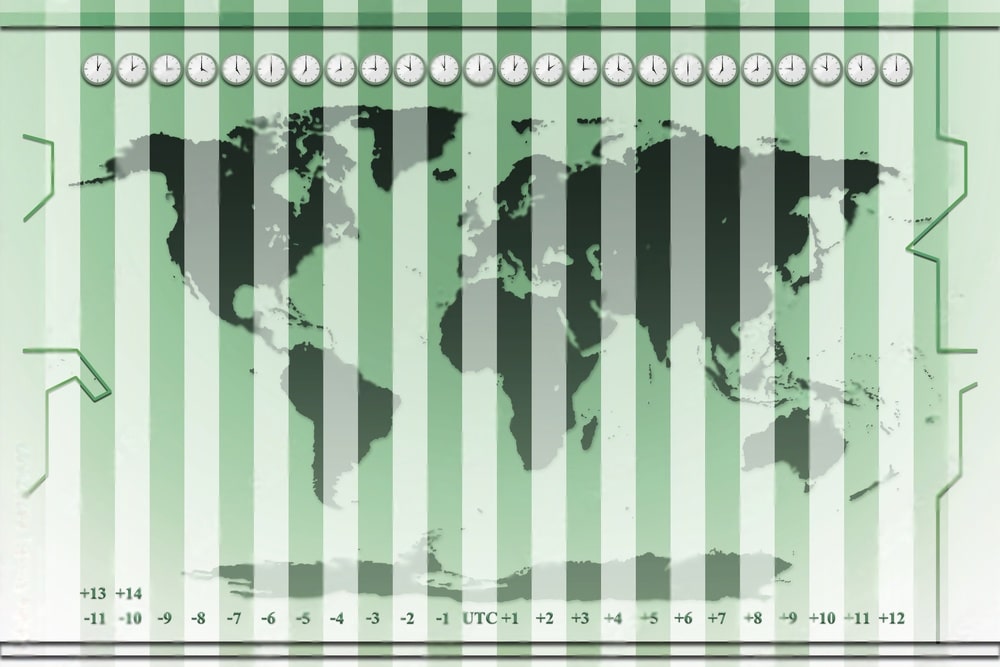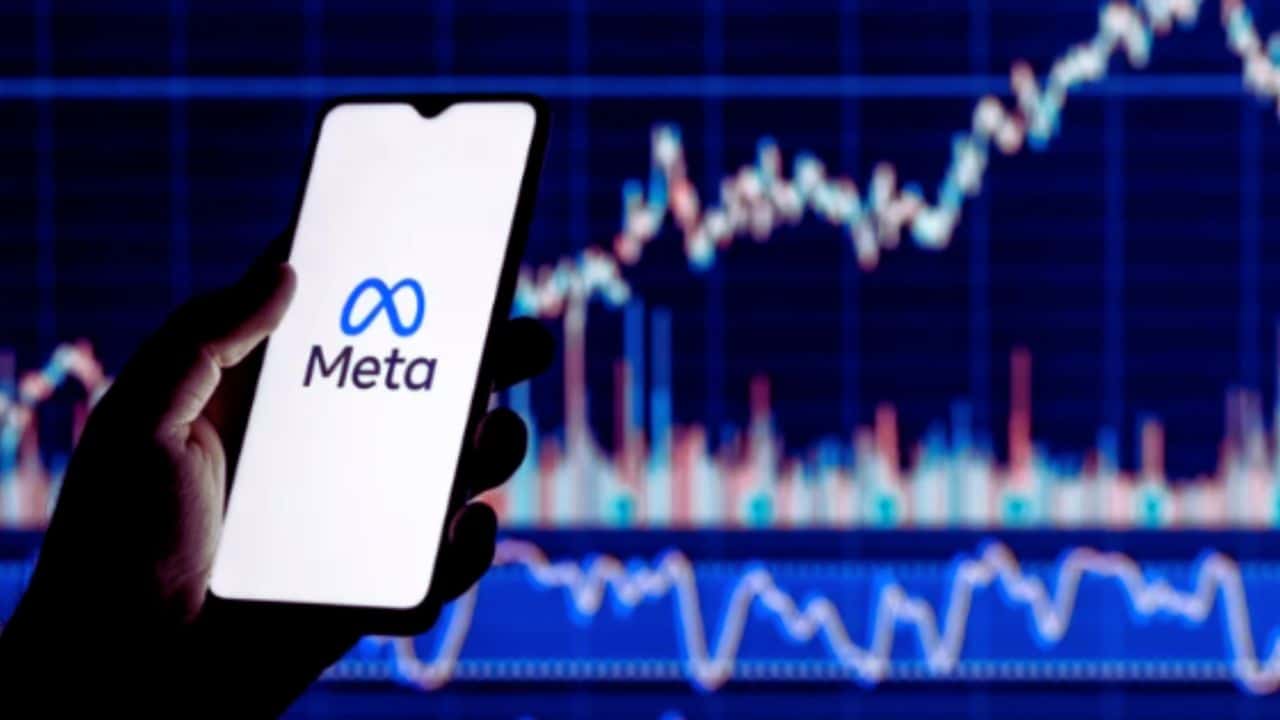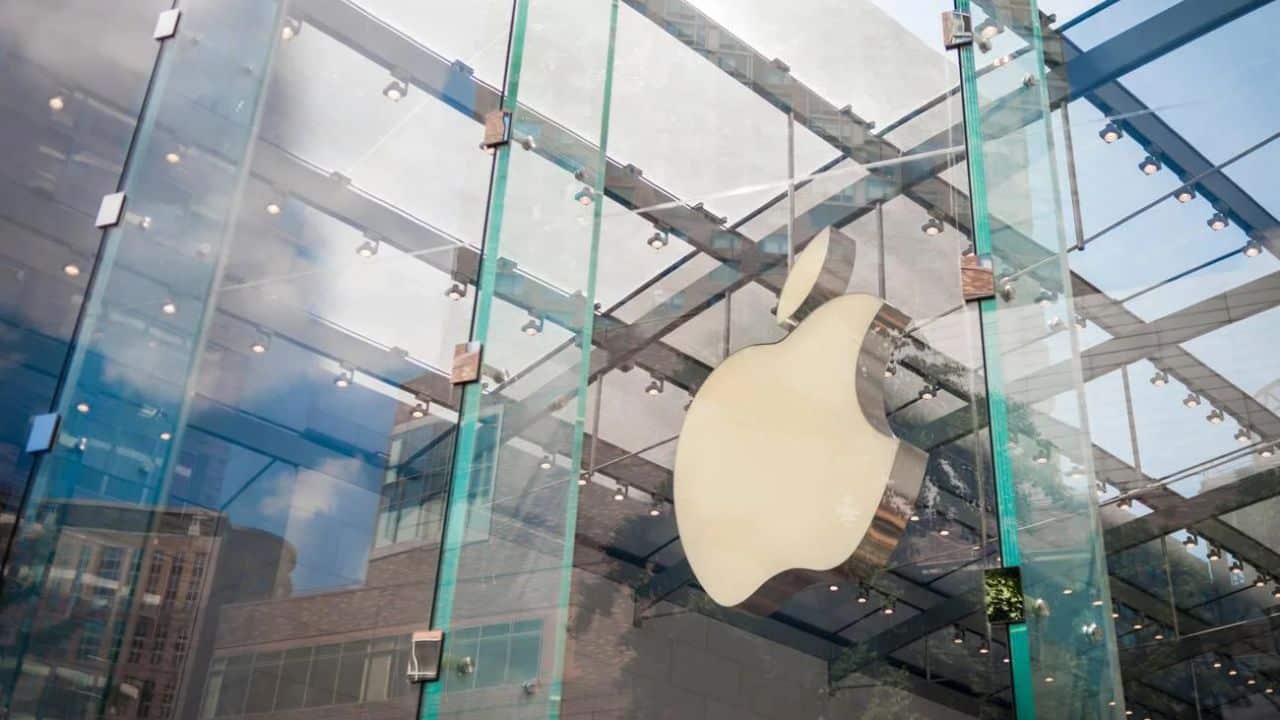Navigating time zones can often leave us in a tangle, especially involving the foundational GMT. Did you know Greenwich Mean Time (GMT) is the base for all global time zones? This guide is tailored to demystify everything about the GMT time zone – from its history and purpose to practical applications in our digital age.
Ready for a timely adventure? Let’s unlock the secrets of GMT together!
Content Highlights
- GMT (Greenwich Mean Time) serves as the base for all global time zones, with its origin and definition rooted in the Prime Meridian at Greenwich, London.
- Time zones are established based on the Earth’s longitude, dividing the world into regions with standardized times to facilitate efficient coordination and communication across different locations.
- Understanding and utilizing GMT effectively is crucial for global communication, serving as a common reference point for scheduling meetings and events across different time zones. Using online tools and converters can simplify the process while being flexible and accommodating helps ensure effective international collaboration.
What is Greenwich Mean Time (GMT)?
Greenwich Mean Time (GMT) is the time standard against which all other time zones in the world are based, with its origin and definition stemming from the Prime Meridian’s role in global timekeeping.
Definition and Origin of GMT
Greenwich Mean Time, commonly known as GMT, traces its roots back to the Royal Observatory in Greenwich, London. Established for maritime navigational purposes in 1675 by King Charles II, this observatory is the zero point of longitude.
GMT signifies mean solar time at this prime meridian – 0 degrees longitude. People began using local clock time at Greenwich as a reference standard. It was crucial to have an internationally recognized basis for determining longitude and timekeeping amid increasing global travel and communication during the late Victorian era.
Consequently, GMT evolved into a worldwide system used extensively in various domains such as broadcast media, aviation systems, and even computer networks for precise synchronization.
Role of the Prime Meridian
The Prime Meridian, situated at 0 degrees longitude, lays the groundwork for Greenwich Mean Time (GMT). This unseen line cuts through Greenwich, London, marking a vital starting point in global timekeeping systems.
GMT is essentially an average solar time at this zero-longitudinal mark. In reality, wherever you are on Earth, your local time has its roots in the position of the Prime Meridian.
As a universal reference line for GMT, it’s also viewed as world time’s nucleus.
Historically significant developments in international time standards have taken place along this meridian. Marking our international date system’s start and end points makes this line indispensable to modern-day life.
From aviation to telecommunications to worldwide financial markets – operations across industries utilize GMT, all thanks to the role played by the Prime Meridian. Therefore when scheduling meetings or planning travel from different parts of the globe using your digital clock devices or apps that use GMT converters would need to consider these practical implications.
GMT as the Basis for Global Time Zones
Greenwich Mean Time (GMT) forms the bedrock of global time zones. Its crucial role is tied to its position at the Royal Observatory in Greenwich, England, which is identified globally as the Prime Meridian serving as a zero-longitude line.
This strategic decision acknowledges GMT’s pivotal role in fashioning worldwide timekeeping norms.
Additionally, most international time zones derive their foundational basis from GMT by incorporating an offset that counts additional or fewer hours. From a practical perspective, this makes GMT analogous to UTC 0 — another standard reference point for determining accurate global times and fostering synchronized activities across varying geographical regions.
Whether tapping your digital device on your bedside table or prepping for an online meeting with colleagues overseas, understanding and using GMT might help you navigate your day more smoothly.
Understanding Time Zones
Time zones are established to divide the world into regions with consistent times, allowing for efficient coordination and communication across different locations.
Definition of Time Zones
Time zones are regions worldwide that have a standardized time to make global communication and coordination easier. They are established based on the number of hours ahead or behind Greenwich Mean Time (GMT) they are.
GMT serves as the reference point for these time zones, with each zone having its designated offset from GMT. For example, if it is 2 pm in the GMT zone, it would be 9 am in New York City (Eastern Standard Time), 6 am in Los Angeles (Pacific Standard Time), and so on.
Understanding time zones is crucial when scheduling international meetings, making travel arrangements, or conducting business with people worldwide.
How Time Zones are Established
Time zones are established based on the Earth’s longitude. The following factors determine how time zones are set:
- The Earth is divided into 24 time zones, each approximately 15 degrees apart.
- Scientists determine Time zone boundaries by considering information about the Earth’s rotation and longitude.
- The Prime Meridian at Greenwich, located in the United Kingdom, serves as the center of world time and is a reference point for establishing time zones.
- Time zone boundaries can only be changed through a legal process led by the Secretary of Transportation.
- Maintaining consistency across time zones is important to ensure that people in various parts of the world are on the same schedule.
Related Read: What Time is it in Florida Now?
The Impact of Daylight Saving Time
Daylight saving time (DST) significantly impacts time zones around the globe. DST was introduced to maximize sunlight in the Northern Hemisphere during summer. By advancing clocks typically by one hour, people can enjoy longer evening daylight for outdoor activities and reduce energy consumption.
The implementation of DST affects various aspects of daily life. It influences transportation schedules, such as train departures and flight times, as these are adjusted based on local time changes due to DST.
Additionally, international businesses must consider DST when coordinating meetings or conference calls across different time zones.
GMT and International Communication
GMT is crucial in global communication as a common reference point for scheduling meetings and events across different time zones. Explore how GMT simplifies coordination and ensures efficient international collaboration in our interconnected world.
Importance of GMT Time Zone in Global Communication
GMT is crucial in global communication, acting as a universal reference point for establishing coordination and synchronizing interactions across different time zones. With the increase in worldwide connectivity, it is essential to have a standardized system for scheduling meetings, events, and other important activities.
GMT serves as this common denominator, allowing individuals and businesses to determine the corresponding local time in various regions worldwide easily. Using GMT as a reference point, miscommunication and confusion can be avoided, ensuring smooth global operations.
Additionally, GMT helps international travelers navigate time differences when planning flights or adjusting their schedules upon arrival in new destinations. Understanding and utilizing GMT effectively are key to effective global communication.
Coordinating Meetings and Events Across Time Zones
Coordinating meetings and events across time zones can be daunting, but it can be done smoothly with proper planning and consideration. Here are some key tips for successful coordination:
- Determine the time zones of all participants: Before scheduling a meeting or event, ensure that you have the correct time zones of all participants. This will help avoid confusion and ensure everyone is on the same page.
- Consider everyone’s local time: When scheduling the meeting or event, consider each participant’s time. Be mindful of potential conflicts for certain participants, such as early or late evenings.
- Use GMT as a reference point: GMT is a common reference point when dealing with different time zones. You can easily convert and compare different time zones using GMT as a baseline.
- Utilize online tools and converters: Numerous online resources and apps can assist in accurately converting time zones. These tools simplify the process and eliminate any guesswork.
- Create a shared calendar: Consider using a shared calendar where participants can view the scheduled meeting or event in their respective time zone. This helps to avoid any misunderstandings or missed appointments.
- Send reminders with converted times: As the meeting or event approaches, send out reminders to all participants with their local times converted from GMT. This ensures that everyone is aware of the correct timing.
- Be flexible and accommodating: While finding the most convenient time for everyone may not always be possible, try to be flexible and accommodating when scheduling across different time zones. Consider rotating meeting times to allow each participant more reasonable timings.
Benefits of Using GMT as a Reference Point
Using GMT as a reference point benefits individuals and organizations operating across different time zones. Firstly, it provides a standardized framework for scheduling meetings and events, avoiding confusion caused by varying local times.
With GMT as the baseline, it becomes easier to coordinate activities and ensure everyone is on the same page regarding timing. Additionally, utilizing GMT helps global communication by eliminating the need for complex conversions or calculations when discussing time-sensitive matters with people from different regions.
By relying on GMT, individuals can plan their schedules more efficiently and avoid miscommunication due to misunderstandings about time zones. Moreover, using GMT as a reference point allows for better synchronization in international business operations, helping companies effectively streamline their processes across various locations.
You May Find Interest: What Time is it in Texas Now?
The Evolution of GMT
GMT has a rich history, dating back to the 19th century, and its role as a crucial reference point in navigation and transportation.
Historical Development of GMT
Over the years, GMT has played a significant role in shaping how we understand and measure time. Its historical development can be traced back to 1884, when it became the international standard for civil time.
The Royal Observatory in London defined GMT as the “zero hours” standard, marking its importance in global timekeeping. As transportation and communication advanced, the need for coordinated time across different regions grew.
This led to establishing of time zones worldwide, with GMT as the basis for their calculations. Today, while UTC has replaced GMT as the global time standard, its historical development remains closely intertwined with our understanding of time zones and accurate time measurement worldwide.
GMT’s Role in Navigation and Transportation
GMT plays a crucial role in navigation and transportation, serving as a reference point for determining time across the globe. In the past, sailors relied on GMT to calculate their positions at sea using celestial navigation.
They could accurately determine their longitude by comparing the local time with GMT. Today, aviation relies on GMT for flight planning and coordinating schedules worldwide. Airlines use GMT as a standard to ensure accurate departure and arrival times for flights across different time zones.
Additionally, modern GPS systems are based on satellite signals that incorporate precise timing information from GMT. Understanding and utilizing GMT is essential for efficient and safe navigation in air and sea travel.
Modern Applications of GMT in Technology and Industry
GMT has become an integral part of modern technology and industry, with its precise timekeeping capabilities being utilized in various sectors. For instance, in technology, GMT is crucial for time synchronization in computer systems, network infrastructure, and telecommunications.
It ensures that different devices are perfectly coordinated across time zones, allowing seamless communication and efficient operations. Moreover, industries like aviation and transportation heavily rely on GMT to schedule flights and coordinate logistics accurately.
Similarly, the financial sector depends on GMT for global trading operations that span multiple time zones. Even scientific research fields such as astronomy and geodesy utilize GMT’s precise timing capabilities.
GMT and Digital Timekeeping
Digital clocks and devices have made it easier than ever to incorporate GMT into our daily lives, with features that allow users to set their time zones based on GMT and track multiple time zones simultaneously.
Using GMT in Digital Clocks and Devices
GMT is widely used in digital clocks and devices to display local time across different time zones accurately. By setting the GMT offset on a device, such as a smartphone or a computer, users can easily see the current time in any desired location worldwide.
This feature is particularly useful for travelers, international businesses, and individuals who frequently communicate or collaborate with people in different time zones. With just a few taps or clicks, you can effortlessly stay updated on time in the GMT zone and avoid any confusion when scheduling appointments or keeping track of important events.
Additionally, various online resources, apps, and tools provide GMT converters, allowing users to track multiple time zones simultaneously for greater convenience.
GMT Converters and Online Resources
- GMT converters and online resources are valuable tools for individuals who frequently travel or work across different time zones.
- These converters allow users to easily convert a specific time in GMT to their local time zone, ensuring accurate scheduling and coordination.
- Users can input the desired GMT, and the converter will provide the corresponding time in their local time zone, eliminating any confusion or errors.
- Online resources related to GMT and digital timekeeping offer guides and tutorials on using these converters effectively.
- These resources also provide information on the history of GMT, its significance, and practical applications in various industries such as aviation, telecommunications, and finance.
- Additionally, these resources offer insights into the principles of digital timekeeping, ensuring accurate time synchronization across different devices and platforms.
- The availability of GMT converters and online resources has made it easier for people to stay connected and manage their schedules efficiently in our globalized world.
Apps and Tools for Tracking Multiple Time Zones
Are you constantly working with people in different time zones? Managing multiple time zones can be challenging, but fortunately, plenty of apps and tools are available to help you track time differences effortlessly. Here are some handy apps and tools you can use:
- Exact Time Clock: This tool accurately calculates time in different time zones. It’s perfect for global teams coordinating meetings and events across various locations.
- Time Finder app: Select your city, and this app will display the current local time. It’s a quick and easy way to check the time in different time zones without hassle.
- Time zone converter app: With this app, you can search for and add your desired time zones to a list. It’s a convenient way to keep track of multiple time zones and ensure you never miss an important deadline.
- Clocker: Available on the Mac App Store, Clocker helps you stay connected with friends and colleagues in different time zones. It lets you see their current local times at a glance, making it easier to schedule meetings or catch up with them.
- GMT watches: If you prefer analog solutions, consider getting a watch like the GMT-Master. These watches are designed to mechanically track two time zones simultaneously, making them ideal for frequent travelers or professionals working across borders.
- Other useful apps: Numerous other apps are available for desktop and mobile devices to help you effectively manage time zone differences. Some popular options include visualizers that show overlapping business hours across global locations and dedicated time zone apps designed specifically for Android or iPhone users.
GMT Travel Tips
Learn how to minimize jet lag and effectively manage time zone changes using GMT as a reference point. Discover strategies for navigating flight schedules and adjusting daily activities while traveling.
Read more about GMT travel tips now!
How to Adjust to New Time Zones Using GMT as a Reference
- Use the GMT zone as a reference point for setting your watch or clock when you arrive at your new destination.
- Take note of the time difference between your original location and the GMT zone, and adjust your schedule accordingly.
- When planning your itinerary, consider the local time in the destination you are traveling to and the GMT.
- Gradually adjust your sleeping and eating patterns according to the local time to minimize jet lag.
- Stay hydrated and avoid excessive caffeine or alcohol consumption, which can disrupt your body’s internal clock.
- Be mindful of any daylight saving time changes in your destination and adjust your schedule accordingly.
- Use online resources or mobile apps that provide real-time information on current times across different time zones.
Remember that using GMT as a reference allows for easier coordination with individuals in different locations, making it easier to schedule meetings or events. By following these tips and using GMT as a reliable reference, you can effectively adjust to new time zones and minimize disruptions to your daily routine.
Managing Jet Lag With GMT-Based Strategies
Jet lag can be a real challenge when traveling across multiple time zones. However, by utilizing GMT-based strategies, you can effectively manage and minimize the effects of jet lag. Here are some practical tips to help you combat jet lag using GMT:
- Adjust your sleep schedule: Gradually shift your sleeping patterns to align with your destination’s time zone. Following GMT as a reference point, you can gradually adjust your internal body clock before traveling.
- Stay hydrated: Drinking plenty of water during your flight and throughout your trip can help alleviate the symptoms of jet lag. Avoid excessive alcohol and coffee, which can contribute to dehydration and worsen jet lag.
- Get some sunlight: Exposure to natural light at appropriate times can help regulate your internal body clock. According to the local GMT, spend some time outside during daylight hours when you arrive at your destination.
- Avoid napping too long: If you need to take a nap upon arrival, limit it to no more than 20-30 minutes. This will prevent excessive grogginess and make adjusting to the local time zone easier.
- Follow meal times according to GMT: Eat meals according to the local time in GMT rather than relying on hunger cues alone. This will help reset your body’s internal clock faster.
- Stay active: Physical activity upon arrival can help combat fatigue and adjust to the new time zone more quickly. Take a walk or engage in light exercise according to GMT.
- Use technology resources: Numerous apps and online tools are available that use GMT to calculate optimal sleep schedules, recover jet lag, and adjust to different time differences. Make use of these resources for guidance.
- Stay consistent with routines: Keep a routine based on GMT throughout your trip, including wake-up times, meal times, and bedtime. Consistency helps your body adjust and decreases the impact of jet lag.
Navigating Flight Schedules and Time Changes
Navigating flight schedules and time changes can be challenging, but understanding the GMT zone can help make it easier. Here are some tips to keep in mind:
- Plan: Check the GMT zone when booking your flights to ensure you know the correct departure and arrival times.
- Be aware of time differences: Understand how many hours ahead or behind GMT your destination is. This will help you calculate the local time when you arrive.
- Adjust your watch: Set your watch to GMT before boarding your flight. This will help you stay on track with the local time at your destination.
- Stay organized: Keep track of any connecting flights and their departure times, taking into account any time zone changes along the way.
- Utilize technology: Use smartphone apps or online resources with GMT converters to easily calculate the local time at your destination.
- Consider jet lag: Crossing multiple time zones can disrupt your sleep patterns. Prepare by adjusting your sleep schedule a few days before traveling and try to get ample rest during the flight.
- Follow airline guidelines: Make sure to arrive at the airport on time according to the local schedule provided by the airline, taking into account any potential delays due to time zone differences.
- Stay informed: Stay updated on any changes in flight schedules or delays by regularly checking with the airline or using flight tracking apps that provide real-time updates based on GMT.
- Double-check connections: If you have a layover in a different time zone, confirm whether you need to adjust your watch or if the airline provides specific instructions for managing connection times effectively.
GMT and Global Business
GMT plays a crucial role in global business operations, enabling efficient scheduling of meetings and avoiding confusion and miscommunication across different time zones.
Managing International Business Operations with GMT
- GMT is essential for managing international business operations, allowing companies to coordinate activities and communication across different time zones effectively.
- Using GMT as a reference point, businesses can avoid confusion and miscommunication from dealing with multiple time zones.
- Scheduling meetings becomes easier when using GMT, as it provides a common frame of reference for participants worldwide.
- Time is a valuable resource in international business, and understanding time zones and their impact is crucial for efficient operations.
- Salesforce supports various time zones, including GMT+14:00 (Line Islands Time), ensuring businesses can adapt seamlessly to different regions.
- With GMT’s association with watches displaying multiple time zones, businesses can easily keep track of different locations’ local times without hassle.
Note: While the list format does not necessarily allow for complete sentences, the provided points maintain clarity and conciseness while addressing managing international business operations with GMT.
Scheduling Meetings With Participants in Different Time Zones
- Consider the time zone differences when scheduling meetings with participants across different regions.
- Use tools like the World Clock Meeting Planner to find a suitable meeting time for all participants in various time zones.
- Take advantage of features in video conferencing platforms like Zoom and Microsoft Teams that allow you to specify the time zone for scheduled meetings.
- Utilize email or calendar applications like Outlook to schedule meetings in different time zones and ensure everyone is on the same page.
- Avoid confusion by clearly specifying the exact time and date of the meeting, along with the respective time zones, in all communication.
- Plan and allow ample time for participants to prepare for meetings, especially if they are located in significantly different time zones.
- Consider potential challenges for certain participants, such as early or late-night meetings due to time zone differences.
- Communicate any changes or updates regarding meeting times promptly to all participants, ensuring everyone is aware of any adjustments made due to conflicting schedules or unforeseen circumstances.
- Keep track of daylight saving time changes and adjust meeting schedules accordingly to avoid confusion and potential missed connections.
- Maintain clear and open lines of communication with all involved parties to address any concerns or questions related to scheduling meetings across different time zones.
Avoiding Confusion and Miscommunication With GMT
To avoid confusion and miscommunication when working with GMT, it’s important to understand the concept of time zones and how they relate to Greenwich Mean Time. By recognizing that GMT is the international standard for civil time and the basis for global timekeeping, you can effectively use this knowledge to schedule meetings and events across different time zones.
Additionally, utilizing tools like GMT converters and online resources can help ensure accurate coordination with participants in other parts of the world. Managing international business operations becomes smoother when you rely on GMT as a reference point, reducing the chances of misunderstandings due to conflicting time zones.
Whether a global business or a frequent traveler, embracing GMT as an essential tool will help streamline your communication efforts worldwide.
GMT in Everyday Life
GMT plays a vital role in everyday life, from planning trips and coordinating activities to incorporating it into personal time management.
How GMT Affects Daily Activities and Routines
GMT significantly shapes our daily activities and routines, especially when managing time across different time zones. By understanding GMT, we can effectively plan and coordinate activities with individuals in various regions of the world.
Whether scheduling meetings with international colleagues or planning travel itineraries, GMT is a reliable reference point for ensuring timely communication and avoiding confusion.
With the help of GMT, we can stay organized and seamlessly navigate global business operations while maintaining productivity and efficiency in our everyday lives.
Using GMT to Plan Travel and Coordinate Activities
Planning travel and coordinating activities become easier when utilizing GMT as a reference point. Here’s how:
- Determine time differences: By knowing the GMT offset for your destination, you can calculate the time difference between your current location and your desired travel destination.
- Coordinate flights and transportation: Use GMT to schedule flights, trains, or other modes of transportation so that you arrive at your destination at the most convenient time.
- Avoid confusion with travel itineraries: When planning multi-leg trips or layovers in different time zones, GMT helps ensure that you accurately interpret departure and arrival times on your itinerary.
- Plan meetings and events: If you’re attending conferences or business meetings across different time zones, using GMT as a reference can help coordinate schedules and avoid confusion regarding meeting times.
- Determine ideal activity times: Whether exploring tourist attractions or participating in local events, understanding the time difference using GMT allows you to plan activities during optimal hours.
- Keep track of local opening hours: Many businesses operate according to their local time zone, but by referencing GMT, you can determine if a specific establishment is open based on its operating hours relative to GMT.
- Sync international phone calls: When contacting friends, family members, or business associates in different time zones, referencing GMT ensures that you call them at an appropriate and mutually convenient time.
- Stay on top of global events: If there’s a significant event happening in another part of the world that you want to follow live (like sporting events or award shows), being aware of the corresponding GMT timing will help you tune in without missing anything.
Incorporating GMT into Personal Time Management
- Use a GMT watch or clock to keep track of time in different time zones accurately.
- Set appointments and reminders based on GMT to avoid confusion and scheduling conflicts.
- Plan your daily schedule by converting local time to GMT, allowing better coordination with individuals in other time zones.
- Use online resources or smartphone apps that provide GMT converters or world clocks.
- Utilize the concept of “GMT plus/minus” when planning activities or meetings to determine the corresponding local time in different locations easily.
- Consider daylight saving time changes in various regions and adjust your schedule using GMT as a reference point.
- When traveling, use GMT as a baseline to plan your itinerary, including flight schedules and hotel check-ins, ensuring smoother transitions between time zones.
- Take advantage of digital tools that allow you to track multiple time zones simultaneously, making it easier to manage global commitments efficiently.
- Incorporate GMT into task management systems or calendars, labeling events with local time and GMT to enhance clarity and prevent misunderstandings.
- Familiarize yourself with common business hours across different regions by referencing them against the GMT standard, aiding in effective communication and collaboration.
Frequently Asked Questions (FAQs)
You may have queries on GMT. Here we have covered some commonly asked questions on GMT.
1. What is GMT, and how does it differ from other time zones?
GMT stands for Greenwich Mean Time and is the standard time against which all other time zones are measured. Unlike other time zones, GMT does not observe daylight saving time, meaning it stays consistent throughout the year.
2. How can I convert my local time to GMT?
To convert your local time to GMT, you need to know the offset of your current time zone from GMT. You can easily find this information online or using a smartphone app that provides world clock functionality. Subtract or add the appropriate number of hours to your local time based on the offset to get the equivalent GMT.
3. Are any regions using GMT as their standard time zone?
Several regions worldwide use GMT as their standard time zone, including parts of Europe, such as London in the United Kingdom and Dublin in Ireland.
4. Will there be any changes to GMT in 2024?
Currently, there are no announced changes to GMT scheduled for 2024. However, it’s always recommended to stay updated with any potential changes or adjustments related to international standards, like timezone protocols, through official sources such as government websites or reputable news outlets specializing in global affairs.

